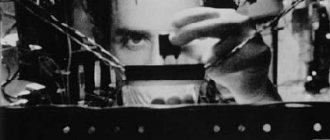By the time I finished reading the paragraph, half of it flew out of my head... Sound familiar? Almost all schoolchildren and students face this problem. The fact is that the human brain is not programmed for cramming, and it generally perceives most of what is written in the textbook as noise - useless information that should not be stored in memory. But if you know how these mechanisms work, you can learn to control this process and understand how to remember what you read the first time.
Science of Memory
Before any information gets to our hard drive, it goes through a complex path and undergoes multi-level processing. The first to study and describe these mechanisms was the German scientist Hermann Ebbinghaus. He identified 4 main memory processes: remembering, storing, reproducing and forgetting.
What is the best way to remember what you read? In this matter, the first two stages are key. Therefore, they are worth considering in more detail.
Memorization is the involuntary imprinting of what has affected the senses. At the same time, a certain trace of excitation caused by electrical impulses remains in the cerebral cortex for some time. In simple terms, everything we see, hear and feel leaves physical traces in our brain.
This can happen in different ways. Even in early childhood, the child’s process of involuntary memorization is activated. We all keep moments and facts that we never tried to remember: a walk in the park at age 5, a first date, scenes from a favorite movie... An interesting phenomenon is that we don’t remember everything equally well. Why is this happening?
Everything depends on the strength of electrical impulses, so we best remember only certain types of information:
- something that is of vital importance (the pain when you put your hand to the fire);
- unusual, bright events and images (a bright costume of an actor at a carnival);
- information that is related to our interests and needs (a recipe for a delicious dish);
- valuable knowledge necessary for our activities and achieving our goals (correct test answers).
90% of how well some information is recorded in memory depends on our perception. First of all, what is imprinted is what aroused strong emotions (both positive and negative) or interest.
Then there is intentional memorization, which is the process in which we consciously try to “write down” certain information, such as dates from a history textbook or an important telephone number.
Storage is the process of processing, transforming and consolidating new information in certain parts of the brain.
First, all information ends up in a kind of “buffer”, RAM. Here the material is stored for a short time in its original form. But at the next stage, the information is processed, associated with what is already known, simplified and transferred to long-term memory. The most difficult thing is to prevent distortions, to prevent the brain from adding non-existent facts or “throwing out” key points. Knowing all this, it is much easier to understand how to remember what you read the first time.
How do we forget
German psychologist Hermann Ebbinghaus studied how meaningless information, such as a series of syllables or numbers, is forgotten. An experiment with volunteers showed that after an hour people do not remember even half of the material, and after a month they forget up to 80%. For coherent ideas the percentage will be lower, but the dynamics of forgetting will remain.
Ebbinghaus Forgetting Curve
We set clear goals
Even if you read very carefully and thoughtfully, after turning the page, you are unlikely to be able to retell in detail what you just learned about.
Back in the 19th century, the Yugoslav psychologist P. Radossavljevic conducted an interesting experiment. The task that the subject faced was to memorize nonsense syllables. This usually required several repetitions. Then the goal changed - now you just had to read what was written. The subject did this as many as 46 (!) times, but when the experimenter asked him to repeat the series by heart, he could not do it. But as soon as I realized that they needed to be learned, it only took 6 times to run my eyes over the syllables in order to accurately retell them. What does this mean?
To understand how to read, so that what you read is remembered, you must set a clear goal for yourself - to remember the material.
There are some tricks here too. The main goal needs to be broken down into more specialized tasks. Simply put, you choose what to focus on. In one case, it is enough to highlight the main facts, in another - their sequence, and in the third - to remember the text verbatim. Then, while reading, the brain will begin to create “hooks” that will help you remember the necessary information.
We create a comfortable environment
And we continue to discuss how to remember the text you read the first time. First of all, you should look around in search of “irritants.” In a noisy classroom or public transport, attention wanders, and sometimes you don’t even realize what is written in the textbook.
In order to completely immerse yourself in the process, it is advisable to sit in a quiet room or find a secluded place somewhere in nature - where nothing will distract you.
It is advisable to study in the morning, when your head is still as clear as possible and new information is absorbed much faster.
Recommendations for memory training
There are many methods and exercises for memory training in the world, almost all of them are effective. Let's look at the most popular of them, which have many positive reviews.
- During any mathematical calculation, you should put the calculator aside. By counting in your head or on paper and doing it regularly, a person increases your memory capacity significantly.
- Start your day by counting from 100 to 1. You need to count in this order and try to increase the speed every day.
- A fairly effective exercise is called “Cities in a Minute.” It's easy to do: in just one minute you need to name 60 cities, one city per second. You won’t be able to do this the first time, but by doing this task every day, you can notice positive results within a week.
- You can try learning new words. This technique will allow a person not only to train his memory, but also to learn a foreign language. Such exercises should be performed regularly, since just once the picture will not change, just like when training muscles. It is recommended to learn fifteen words a day and increase this barrier with each subsequent week.
- The simplest and most well-known exercise is considered to be the usual memorization of a poem. The important thing about this technique is its consistency, that is, you need to learn new poems systematically.
Discussing with friends
Although many people do not like retelling in school literature lessons, this is one of the most effective ways to better remember what they read. When you speak about something you recently read, the brain uses two channels of memorization and reproduction at once - visual and auditory (auditory).
It’s even better if you have an interlocutor who is ready to support the discussion. During the discussion, key facts and arguments seem to be “driven” into memory, remaining there for a long time. In some countries, reading clubs are common, whose participants gather specifically to discuss what they have read and share their impressions.
Learning to read correctly
If you want to know how to learn to remember what you read the first time, you should first work on your reading technique. Don’t forget that visual memory plays a huge role in memorization: you mentally “photograph” the page, and if you can’t remember something, you just have to imagine it, and the necessary information will pop up in your head. But how to achieve this?
- Don’t immediately start reading every word, but try to take in the entire page with your eyes.
- Increase your reading speed. It has been proven that the faster a person studies a text, the more effectively the information is absorbed. Try to expand the area of focus in order to “snatch” not one, but at least 2-3 words with your gaze. In addition, you can enroll in speed reading courses, where you will be taught to read diagonally.
- When you notice that you were distracted and missed a fragment, under no circumstances return to it to re-read. Such “jumps” interfere with a holistic perception of the material. It is better to study the paragraph to the end, and then re-read it.
3/ Share what you learn
Do you want to remember a curious fact about your favorite artist that you read in a biography? Share it with someone. By retelling what you read in your own words, you form new neural connections. This stimulates the work of the “little gray cells,” as Hercule Poirot would say, and the information received is better retained in memory.
“You haven't gotten the point until you can summarize the plot,” writes American philosopher and educator Mortimer Adler in his guide to reading great books. This is why it is so useful to discuss what you have read with an interested interlocutor. After all, when answering the question “what is this book about?”, you are actually analyzing what you have read, highlighting the main theme and key ideas of the author. What can we say about joint discussions in book clubs, when the reader has the opportunity to see a familiar story in a completely unexpected interpretation.
If you read a lot of scientific or professional literature, use the “Feynman Technique,” created by the Nobel laureate in physics. Richard Feynman's strategy is brilliant in its simplicity. To ensure you remember the contents of the book, he recommends taking a blank sheet of paper and writing down its main ideas as if you were explaining them to an eight-year-old child.
Writing notes
Another option for remembering what you read the first time. If you don’t just skim the text, but work through the material and at least briefly write down the main points, then using these notes you can easily recall the necessary information in your memory.
However, it is important to know what and how to take notes, because without a specific system you will simply get confused in a bunch of fragmentary facts. Here are a few techniques you can use:
- Grouping. All material is divided into small fragments, which are then combined according to some characteristics (topic, time period, associations, etc.).
- Plan. For each part of the text (paragraph, chapter or section of a paragraph), short notes are created that act as reference points and help restore the full content. The format can be anything: key points, titles, examples or questions to the text.
- Classification. Designed in the form of a diagram or table. Allows you to distribute various objects, phenomena or concepts into groups and classes based on common characteristics.
- Schematization. Using text blocks, arrows and simple drawings, connections between various objects, processes and events are demonstrated.
- Associations. Each point of the plan or thesis is correlated with a familiar, understandable or simply memorable image, which helps to “resurrect” the rest in memory.
At the same time, try not to get carried away. Remember that this is not a full-fledged summary, but small pointers that will direct your thoughts in the right direction.
Reading Rule 4: Don’t try to embrace the immensity
If you think that science is the only true and proven thing in our life, you are deeply mistaken. Nowhere else will you see such a huge number of controversial facts, unconfirmed theories, and warring studies.
What does all this prove? That in fact no one really knows anything and cannot say with complete certainty. So don't worry if you don't understand why 2+2=5. After all, many famous scientists also disagree with this statement.
In order not to “float” on the exam on points that are not entirely clear, find a couple of famous names or theories that contradict general statements. This will increase the level of your intelligence in the eyes of the teacher, and will also give you the opportunity not to torture you further and let you go in peace.
Creative associations
Few people know, but inventing them is an art. There are 5 “golden” rules that must be followed in order to easily remember any information:
- Don't think. Use the first image that comes to mind.
- Associations must have a strong emotional component.
- Imagine yourself as the main character (for example, if a lemon was on the table, try to “eat” it).
- Add absurdity.
- Make the resulting “picture” funny.
How it works? Let's say you're studying painting and want to remember what pointillism is. In short: this is one of the varieties of neo-impressionism, where the paintings consist of many bright dots of the correct shape (the founder is Georges-Pierre Seurat). What association can you come up with here? Imagine a ballerina who has smeared her pointe shoes with paint and, while dancing, leaves a picture of multi-colored dots on the stage. He moves on and accidentally touches a jar of yellow sulfur with his foot, which falls with a loud crash. Here are our associations: pointe shoes with bright spots are pointillism, and a container with sulfur is Georges-Pierre Seurat.
Repetition method by I. A. Korsakov
This technique is based on the fact that we forget a huge part of information almost instantly. However, if you repeat the material regularly, it will become firmly established in your memory. What do you need to remember?
- New information must be repeated within 20 seconds after it is perceived (if we are talking about a large fragment of text - up to a minute).
- During the first day, retell the material several times: after 15-20 minutes, then after 8-9 hours, and finally after 24 hours.
- To remember what you read for a long time, you need to repeat the text several more times during the week - on the 4th and 7th days.
The technique is very simple, but at the same time incredibly effective. Regular repetitions let the brain understand that this is not just information noise, but important data that is constantly used.
How to remember numerical information
To do this, we recommend learning the alphanumeric code (NLC) up to 100. The essence of the technique comes down to translating numbers into words. To carry out this translation, you need to select a letter for each number in a pair: 0 - N, 1 - K, 2 - L, 3 - T, 4 - H, 5 - P, 6 - Sh, 7 - S, 8 - V, 9 - D. Next, your task is to remember the letter that encodes the number, and to select a figurative word for the number that contains the letters of the encoded numbers. For example: 24 - LC (beam, face, lecho), 27 - LS (fox), 75 - SP (rescuer) and so on.
It's not easy, but once you master this tool, you'll find it easier to remember dates and other numbers. You can move away from the standard PBC and come up with your own images. For example, the number 2 looks like a swan, and the number 11 looks like ski poles. It turns out that the number 211 can be remembered as a swan running with ski poles.
Cicero's method
A useful technique for those who want to know how to remember information read in books. The point is quite simple. You choose a certain “base” - for example, the furnishings of your apartment. Remember where your morning begins, what you do and in what order. After this, you need to “attach” some piece of text to each action - again, using associations. This way you will remember not only the essence, but also the sequence of presentation of information.
For example, while studying a paragraph on history, you can mentally “draw” scenes of battles on the bedside table or “send” Columbus to roam the expanses of the bathroom.
Techniques for quickly learning a poem
Don't know how to quickly learn texts by heart? Using some techniques and recommendations, this will become much easier and faster.
Initially, you should read the text or poem several times, this will help you understand what it says.
The poem should be read loudly and with expression.
After this, be sure to visualize the poem; this is a little more difficult than in the case of prose, but the result will be effective. For example, if the poem talks about a prisoner sitting behind bars (A.S. Pushkin), then you can even draw this picture on paper.
When memorizing a poem, pay attention to the rhymes. You can also try to read the work in roles, create a dialogue, for example, with a close relative or friend.
Have you memorized a poem, but are you afraid to make a mistake when telling it? Write down the first words of each line on paper, this will make the task much easier.











